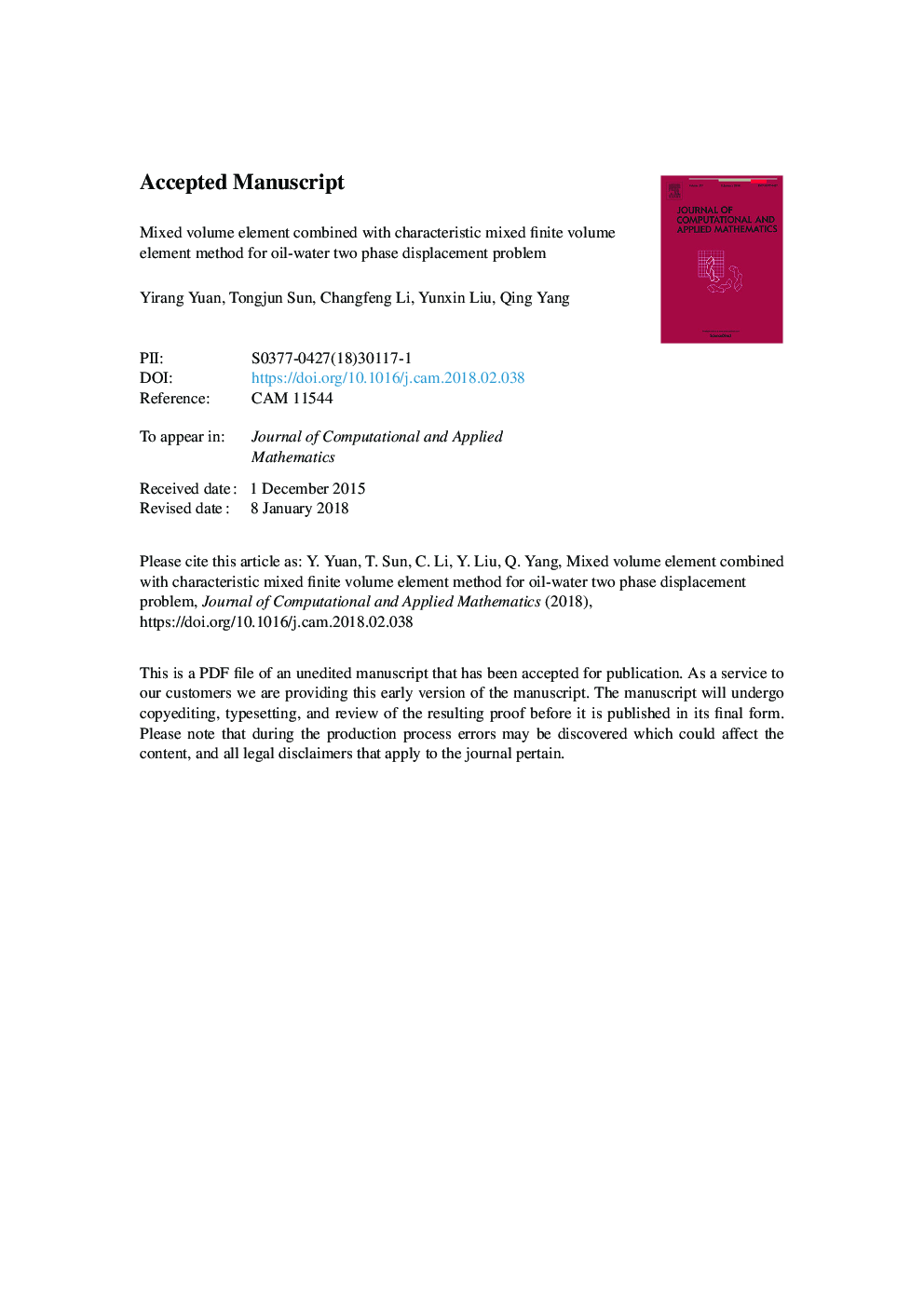| Article ID | Journal | Published Year | Pages | File Type |
|---|---|---|---|---|
| 8902002 | Journal of Computational and Applied Mathematics | 2018 | 20 Pages |
Abstract
As the basic of numerical simulation of energy science, the displacement of three-dimensional oil-water two phase in porous media is discussed in this paper. For incompressible miscible displacement, the pressure is described by a flow equation in an elliptic mathematical formulation and the saturation is defined by a convection-diffusion equation. The pressure exists in the saturation equation by Darcy velocity, and controls the whole flow. We develop and improve substantially the work of Arbogast and Wheeler, then put forward a mixed volume element combined with characteristic mixed finite volume element method for two-phase displacement problem. The flow equation is discretized by the conservative mixed volume element method, which could improve the accuracy of an order for computing Darcy velocity. The saturation equation is solved by a characteristic mixed volume element method, where mixed volume element method is used to compute the diffusion term and the method of characteristics is adopted to discretize the convection term. The method of characteristics can confirm high stability of numerical simulation at the fronts, avoid numerical dispersion and nonphysical oscillation, and can adopt large time steps, obtain smaller time truncation error and improve the computation accuracy. Mixed volume element can solve the convection term, confirm conservation of mass at each element and approximate the saturation and the adjoint vector meanwhile. It is most important in numerical computation of seepage mechanics. Optimal second order estimates in L2 norm are derived by theory and special techniques of priori estimates. Finally, numerical experiments are shown to illustrate the efficiency and practicability and to solve the international problem successfully.
Keywords
Related Topics
Physical Sciences and Engineering
Mathematics
Applied Mathematics
Authors
Yirang Yuan, Tongjun Sun, Changfeng Li, Yunxin Liu, Qing Yang,
